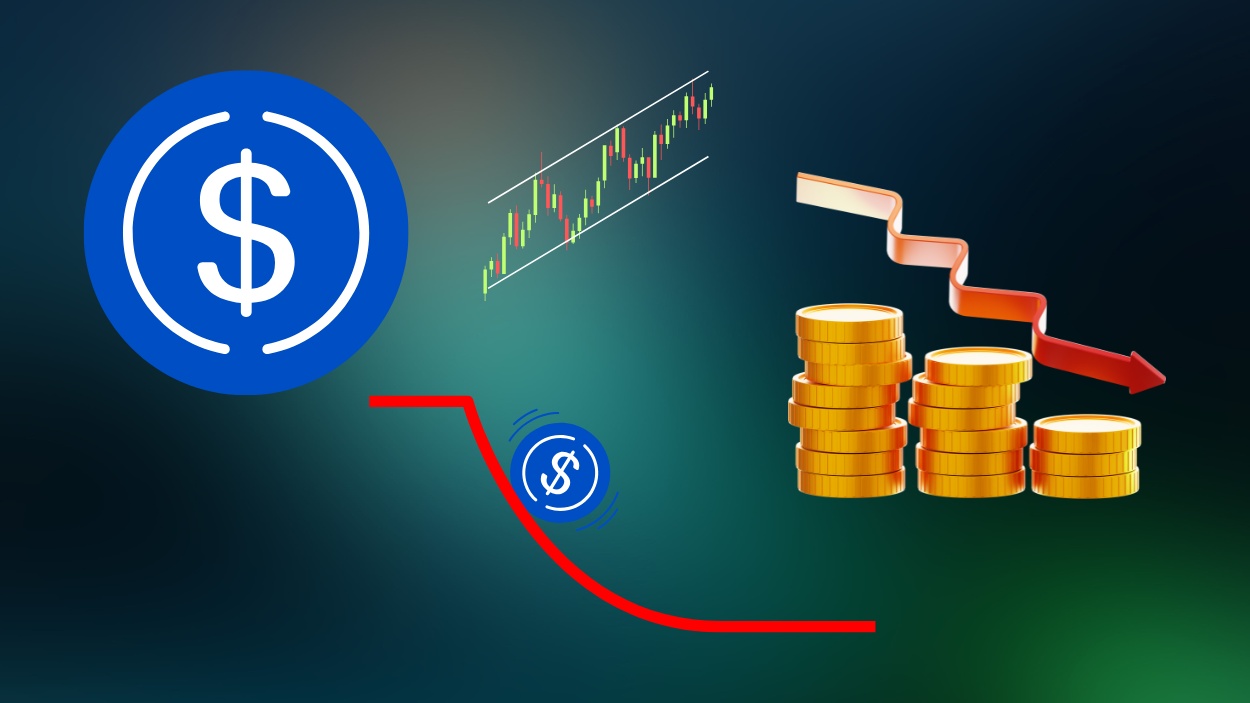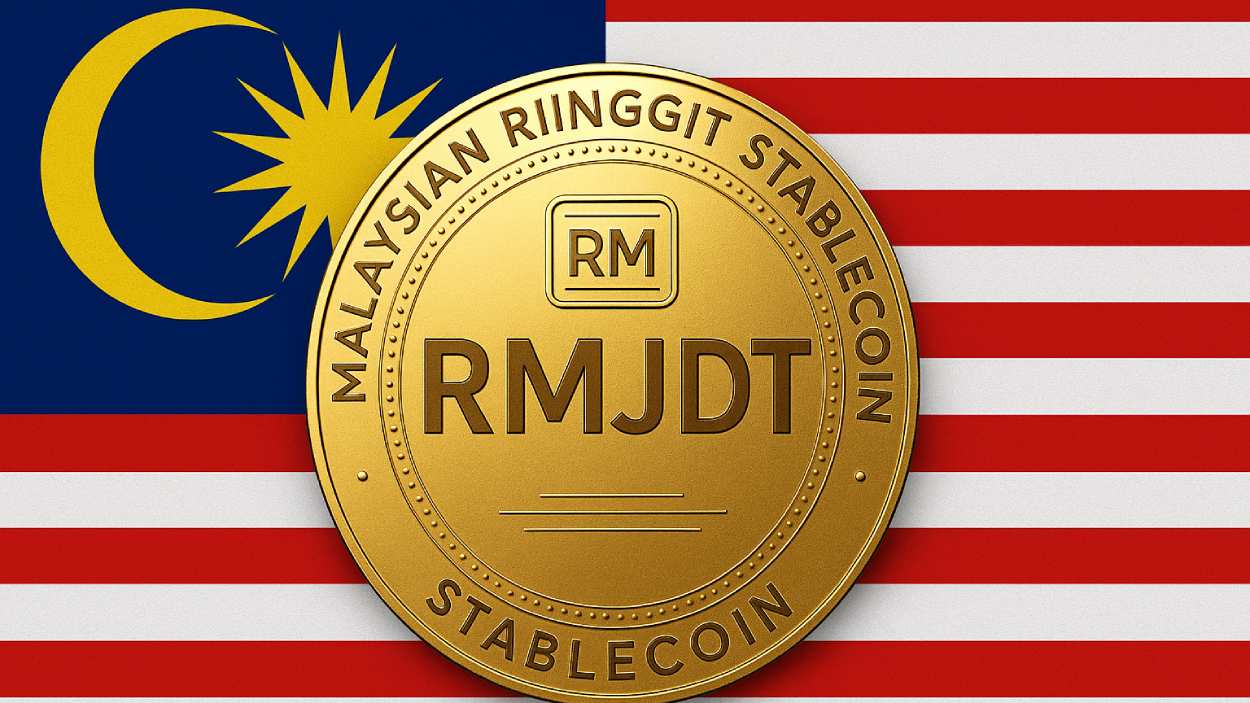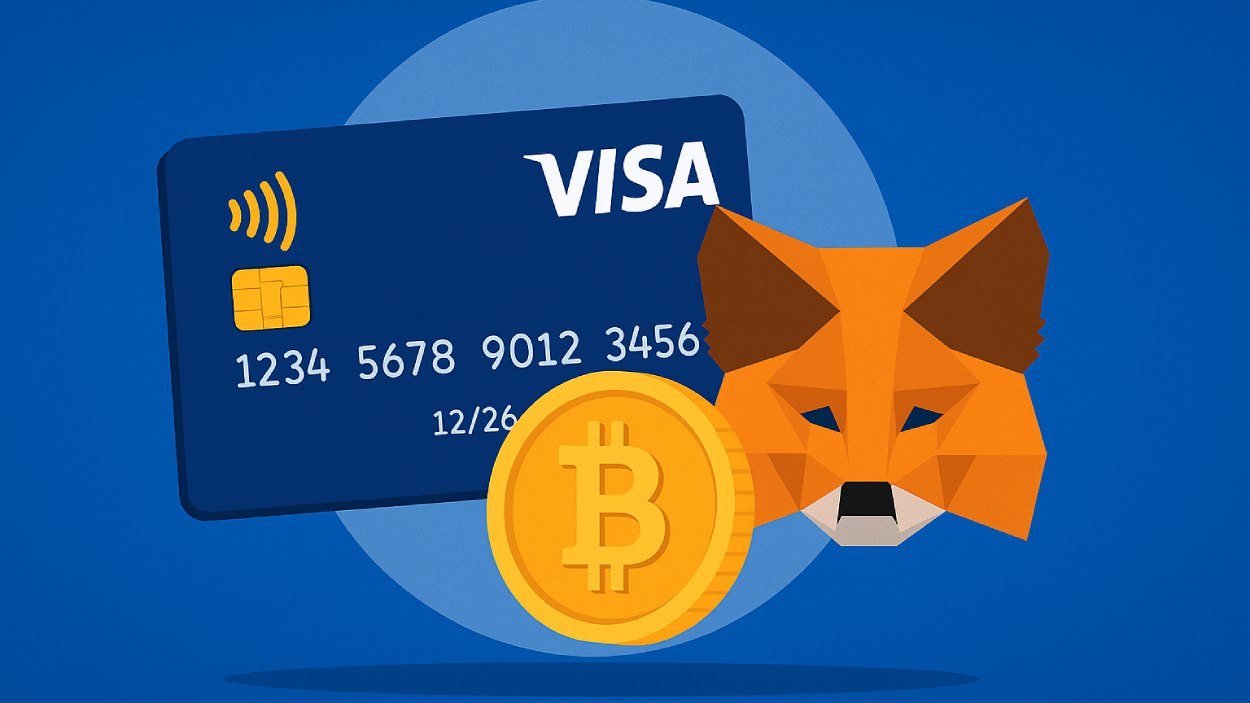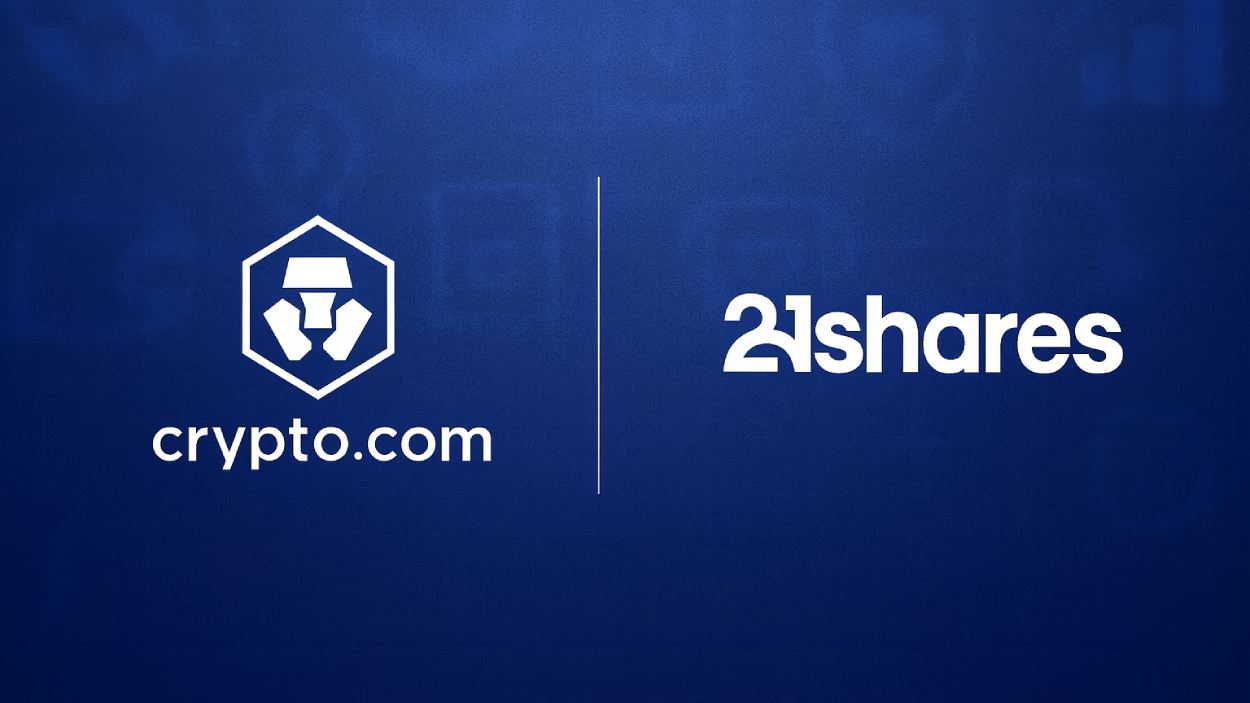Amid the chaos, one name steadily rises, not because of wild price swings but because it doesn’t move at all. That name is Tether (USDT). Built to hold a 1:1 peg with the US dollar, Tether has evolved from a niche concept to a cornerstone of the global crypto economy. Fast-forward today, and it now powers billions of transactions daily, bridging the volatile world of crypto with the relative stability of fiat.
But how big is Tether, really? Where does it stand among other stablecoins? And what do the numbers reveal about its growth, usage, and trustworthiness? Let’s dive into the data.
Editor’s Choice
- Tether’s market capitalization surpassed $183.2 billion in October 2025, maintaining its position as the largest stablecoin by market cap.
- As of Q3 2025, Tether controls over 82.5% of global stablecoin trading volume and nearly 8.6% of the overall crypto market cap.
- USDT’s 24-hour trading volume regularly exceeds $128 billion, outpacing both Bitcoin and Ethereum most days.
- In H1 2025, over $8.9 trillion worth of Tether was settled on-chain with monthly net inflows averaging $400 million and a year-over-year growth rate of 24.8%.
- More than 82% of decentralized exchange trades on Binance Smart Chain and Ethereum involve Tether pairs, marking USDT as the dominant DEX pair in 2025.
Circulating Supply Trends
- Tether’s circulating supply reached 157.1 billion tokens in October 2025, matching its market cap given the stable 1:1 USD peg.
- Over 77% of the total supply resides on Ethereum, Tron, and BNB Chain, the top three networks by USDT distribution.
- Tron remains the largest host of USDT with approximately 78.5 billion tokens, followed by Ethereum with 78.5 billion as of October 2025.
- The number of unique wallets holding USDT increased by 18.6% year-over-year, hitting 12.7 million in October 2025.
- Over 65 million transactions involved USDT in October 2025 alone.
- On-chain burn events indicate that over 9.4 billion USDT have been redeemed or destroyed since January 2024.
- The average USDT transaction size is approximately $4,920, reflecting its usage in both retail and institutional payments.
- New USDT minting increased by 20 billion in the year-to-date 2025, primarily driven by demand from Asia-based exchanges.
- Over 38% of Tether issuance occurred within the last 12 months, making it one of the most active years to date.
Tether’s Share in the Stablecoin Market
- Tether holds a leading 59.9% share of the global stablecoin market as of October 2025.
- USDC currently claims 25.5% market share while DAI accounts for 3.3% as of October 2025.

- Over 93% of stablecoin market capitalization is held by fiat-backed coins like Tether, reflecting continued centralized dominance.
- Tether is used in 66% of all stablecoin-based trades on centralized exchanges, according to recent CEX data.
- In DeFi, Tether is present in more than 43% of stablecoin liquidity pools, especially on Arbitrum and Polygon.
- Tether’s dominance was just 43% back in 2021, highlighting its strategic growth over four years.
- Tether has more than double the market share of all decentralized algorithmic stablecoins combined.
- Across global OTC desks, Tether is the default stablecoin in over 82% of cross-border crypto settlements.
Top Exchanges by Tether Volume
- Binance remains the top exchange for Tether trading, processing over $20 billion in USDT trades daily.
- OKX and Bybit each facilitate between $6–9 billion in daily USDT volumes.
- Coinbase Pro and Kraken lead US-based Tether trading with a combined $3.1 billion daily volume.
- In 2025, over 60% of all spot crypto trades involve Tether pairs.
- KuCoin and MEXC average over 900 USDT pairs each, showing high usage for altcoin trading.
- Tether/Bitcoin and Tether/Ethereum are the most actively traded stablecoin pairs, comprising over 35% of total crypto trading volume.
- DEX aggregators like 1inch and Paraswap route a significant share of USDT trades on-chain, especially on Ethereum and Arbitrum.
- Huobi Global processed more than $11 billion in USDT derivatives trades in February 2025.
- Gate.io recently surpassed $5 billion monthly volume in Tether swaps, largely driven by Asian demand.
- Bitfinex maintains a $2 billion monthly average for USDT issuance and redemption.
Blockchain Networks Supporting Tether
- Tron hosts the largest supply of USDT at 78.5 billion tokens, followed by Ethereum at 78.5 billion.
- Polygon holds 3.7 billion USDT, and Solana accounts for 2.2 billion USDT as of October 2025.
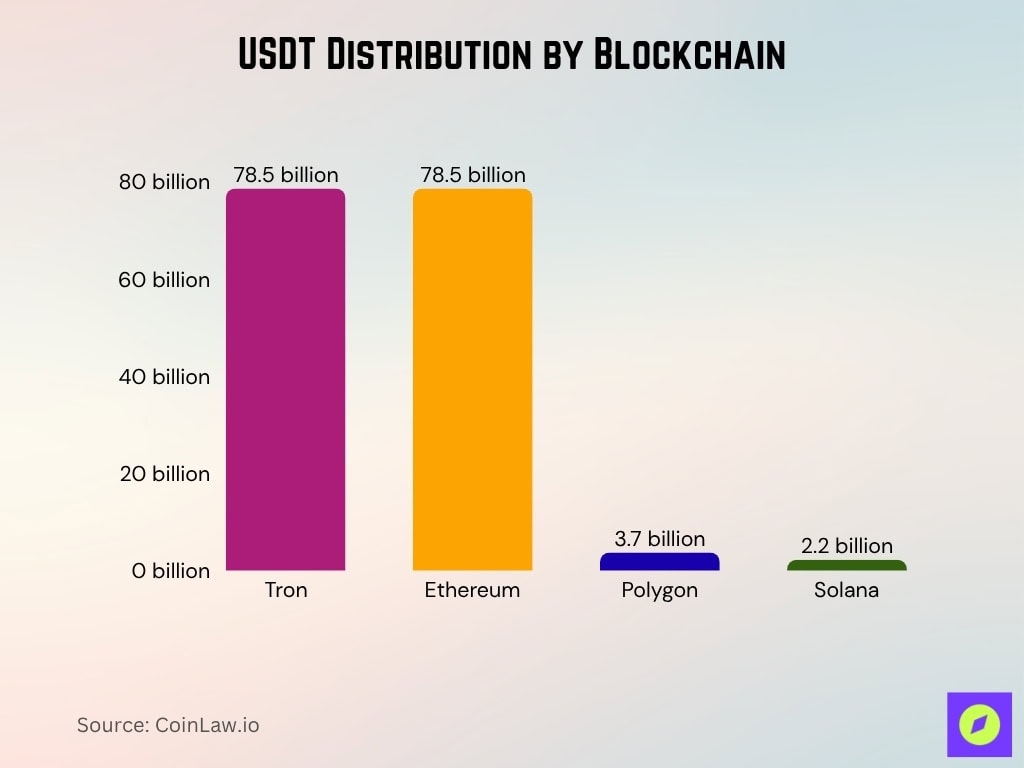
- About 77% of all USDT transactions in Q3 2025 took place on Tron and Ethereum combined.
- Avalanche and Arbitrum each carry more than $1.1 billion in USDT, mostly used in DeFi protocols.
- The average transaction cost for Tether on Tron is under $0.01, fueling its popularity for micropayments.
- Bridges enabled Tether to flow between ecosystems, with over $3.4 billion bridged in the last 12 months.
- Layer 2 networks now account for 9.3% of all Tether volume, reflecting growing USDT adoption.
Geographic Distribution of Tether Usage
- Asia leads Tether adoption, accounting for over 45% of global USDT volume in Q1 2025.
- Latin America represents 18% of Tether usage, with Argentina and Venezuela relying on USDT for inflation hedging.
- Nigeria, Kenya, and South Africa drive Africa’s USDT demand, with Africa’s monthly on-chain volume reaching nearly $25 billion in March 2025.
- The United States accounts for 11% of global Tether activity largely through institutional trading desks and DeFi platforms.
- Europe’s USDT activity is concentrated in Germany, the Netherlands, and Turkey, comprising around 14% of usage.
- Cross-border B2B settlements using Tether surged in the Middle East and Southeast Asia, with $30+ billion settled in Q1 2025 alone.
- The fastest-growing Tether market is Southeast Asia, with a 36% YoY increase in on-chain transactions.
- Peer-to-peer USDT transfers in Eastern Europe now make up over 27% of total crypto volume in some regions.
- Over 70% of OTC crypto trades in emerging economies are settled in USDT, confirming its de facto digital dollar status.
Tether (USDT) Key Highlights
- Tether reached 433 million total users worldwide, underscoring its dominant role as the most widely adopted stablecoin.
- 39 million new users joined in Q1 2025, showing accelerating growth in adoption across global markets.
- If Tether were a country, its U.S. Treasury holdings would rank 19th, positioning it among the top sovereign holders of U.S. debt.
- USDT is reinforcing the U.S. dollar’s global supremacy, serving as a digital bridge for international trade, remittances, and payroll.
- The report emphasizes that Tether expands U.S. financial influence, acting as a “digital dollar” in emerging economies where stablecoins fill gaps left by traditional banking systems.
- By promoting dollar-based savings and transactions, USDT continues to strengthen its role as a core pillar of the global crypto economy.
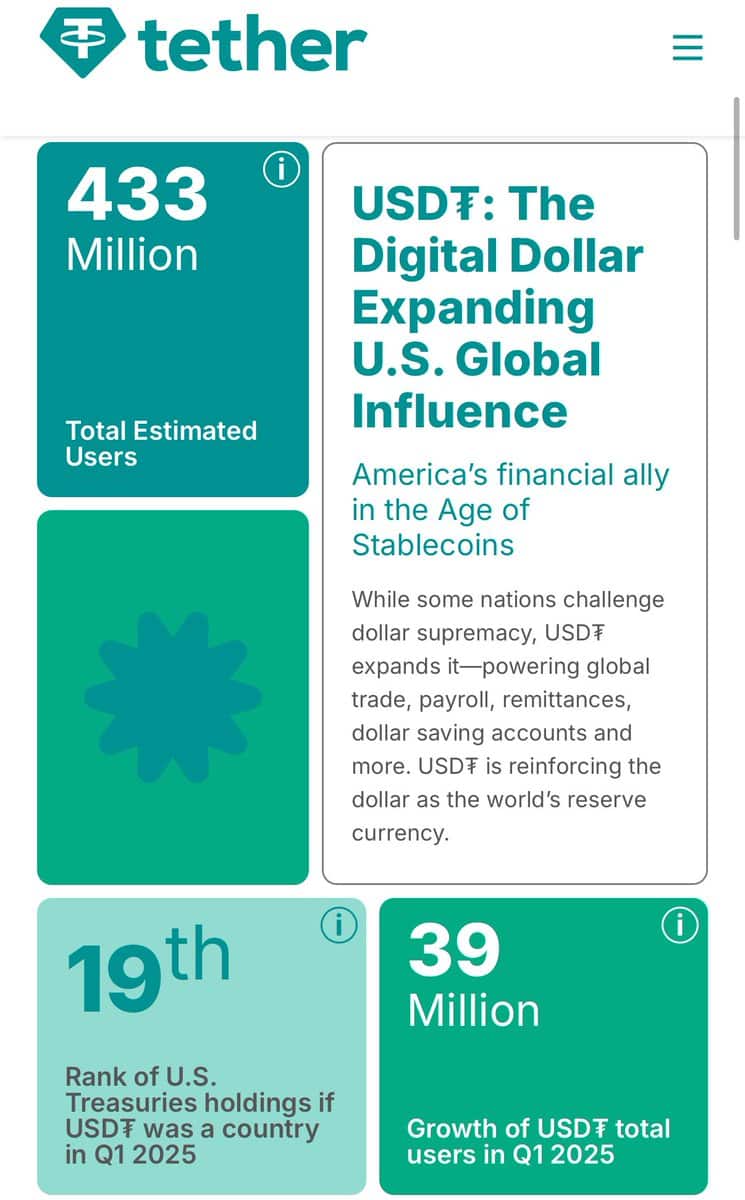
Wallet Distribution and On-Chain Activity
- There are now 10.7 million active USDT-holding addresses, up 19.2% year-over-year.
- The top 100 addresses hold 37% of the supply, signaling improved distribution.
- The average USDT wallet holds about $970, with high variation between exchanges and self-custody users.
- Over 43 million USDT transfers were recorded on-chain in January 2025 alone.
- DEX transaction volume using Tether exceeded $19 billion in February 2025.
- On Tron, Tether is the most transferred token, averaging 4.1 million transactions per week.
- More than 1.4 million smart contracts have interacted with USDT on-chain as of Q1 2025.
- Wallet analytics platforms track over $48 billion in cold-storage Tether balances as of October 2025.
Environmental Impact and Energy Consumption
- Tether transactions are among the most energy-efficient, with less than 0.0001 kWh per transfer on Tron and Polygon.
- USDT generates over 99.95% less carbon emissions per transaction than Bitcoin due to efficient blockchain networks.
- Ethereum’s switch to PoS cut Tether-related emissions by over 98% from pre-2022 levels and reduced per-transaction energy by ~99.95%.
- USDT now benefits from Layer 2 scalability, making it far less resource-intensive per transaction.
- Green partnerships include the Toucan Protocol to integrate environmental metrics into DeFi platforms using USDT.
- Smart contract optimization on Ethereum and Arbitrum reduced USDT gas fees and emissions by 23% year-over-year.
Tether (USDT) Reserve Asset Breakdown
- Tether’s reserves are overwhelmingly backed by U.S. Treasuries, accounting for about 78–80% of total assets.
- Around 11% of reserves are held in reverse repurchase agreements, providing short-term liquidity with government securities as collateral.
- About 4–5% of reserves consist of cash and money market funds, offering reliable liquidity for redemptions and operations.
- Approximately 5.9% of Tether’s reserves are allocated to secured loans, further diversifying the asset pool
- Tether holds over 11.6 tons of physical gold, valued at roughly 2–4% of total reserves as reported in Q3 2025.
- The company now owns more than 100,000 BTC, which constitutes close to 5% of Tether’s reserve assets according to attestation updates and public statements.
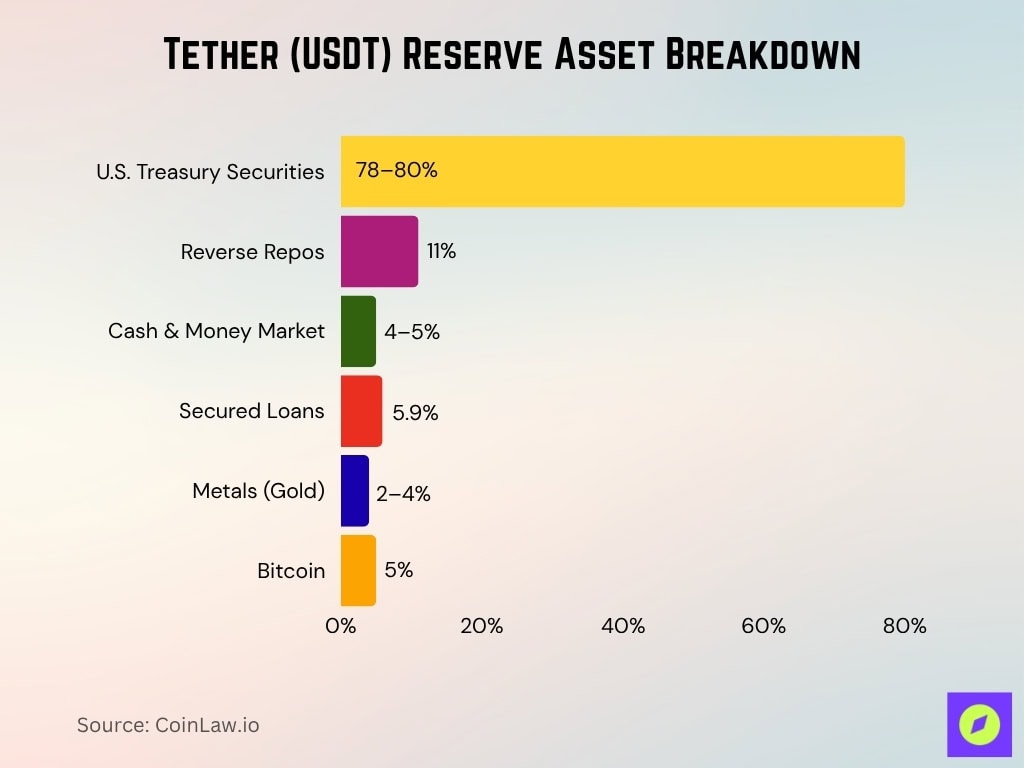
Recent Developments
- The company launched Tether Pay, a lightweight mobile payment system focused on emerging markets, in 2025.
- USDT is now natively supported in Telegram, enabling instant P2P transfers for its over 700 million users.
- Tether announced a new API standard for stablecoin redemption, improving liquidity for OTC desks and banks.
- Tether doubled its R&D budget, which now exceeds $70 million annually for infrastructure and compliance.
- A new pilot with Latin American banks lets users directly deposit and withdraw USDT from bank accounts.
- Tether supports cross-chain swaps via LayerZero and Axelar integrations, boosting DeFi interoperability in 2025.
- The firm launched Tether Insights, a real-time analytics portal for stablecoin flows and velocity in 2025.
Frequently Asked Questions (FAQs)
$183.2 billion.
Average $400 million over the past 90 days.
8 major blockchains (including Ethereum, Tron, BNB Chain, Solana, Polygon, Avalanche, zkSync, Base).
Conclusion
Tether’s dominance in the stablecoin world is no accident; it’s the result of continuous adaptation, growing trust, and strategic expansion. From becoming the first stablecoin to leading cross-border settlements and DeFi liquidity, USDT continues to redefine what digital dollars can do. While scrutiny and competition persist, Tether’s commitment to transparency, compliance, and innovation makes it a central pillar in the future of digital finance.
Hover or focus to see the definition of the term.












